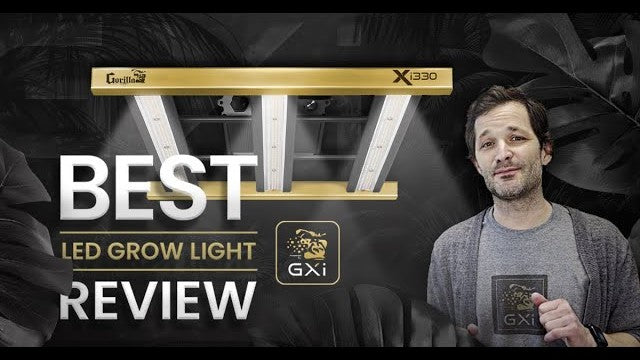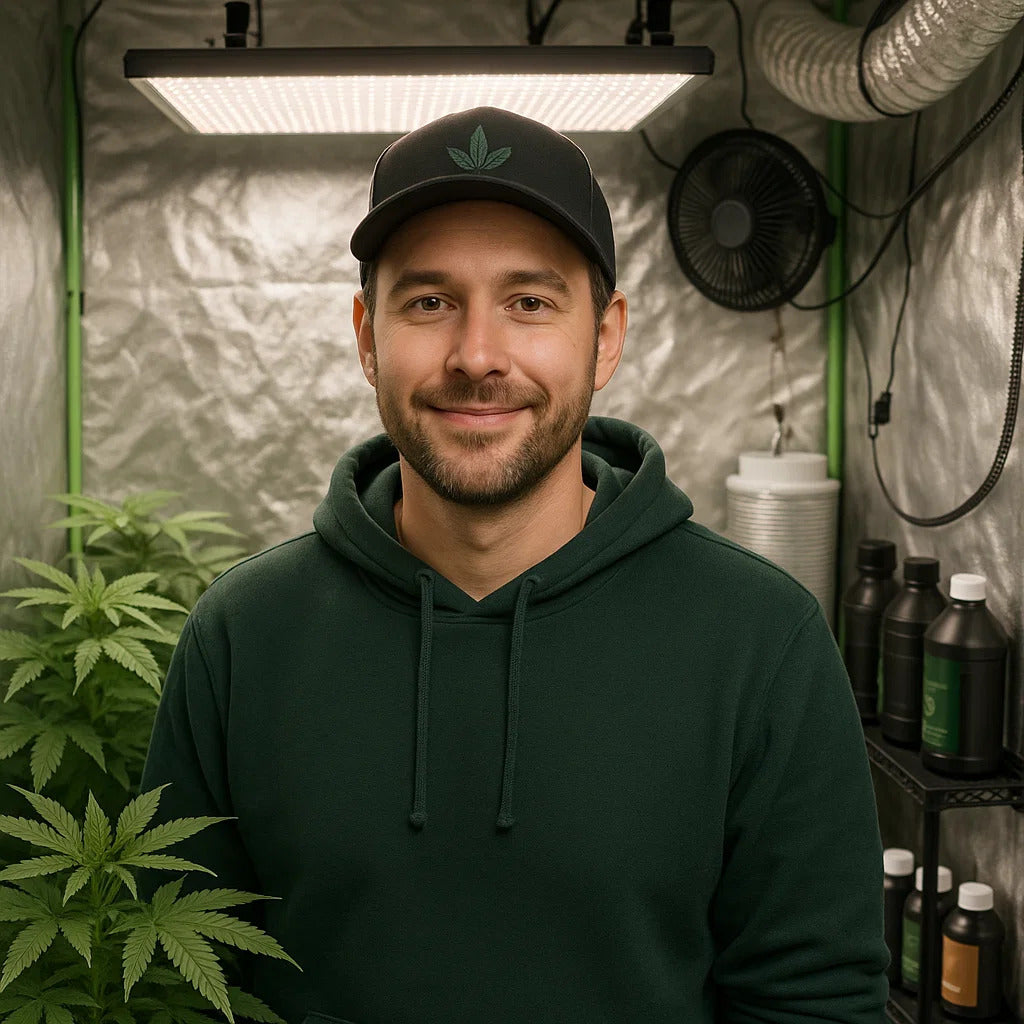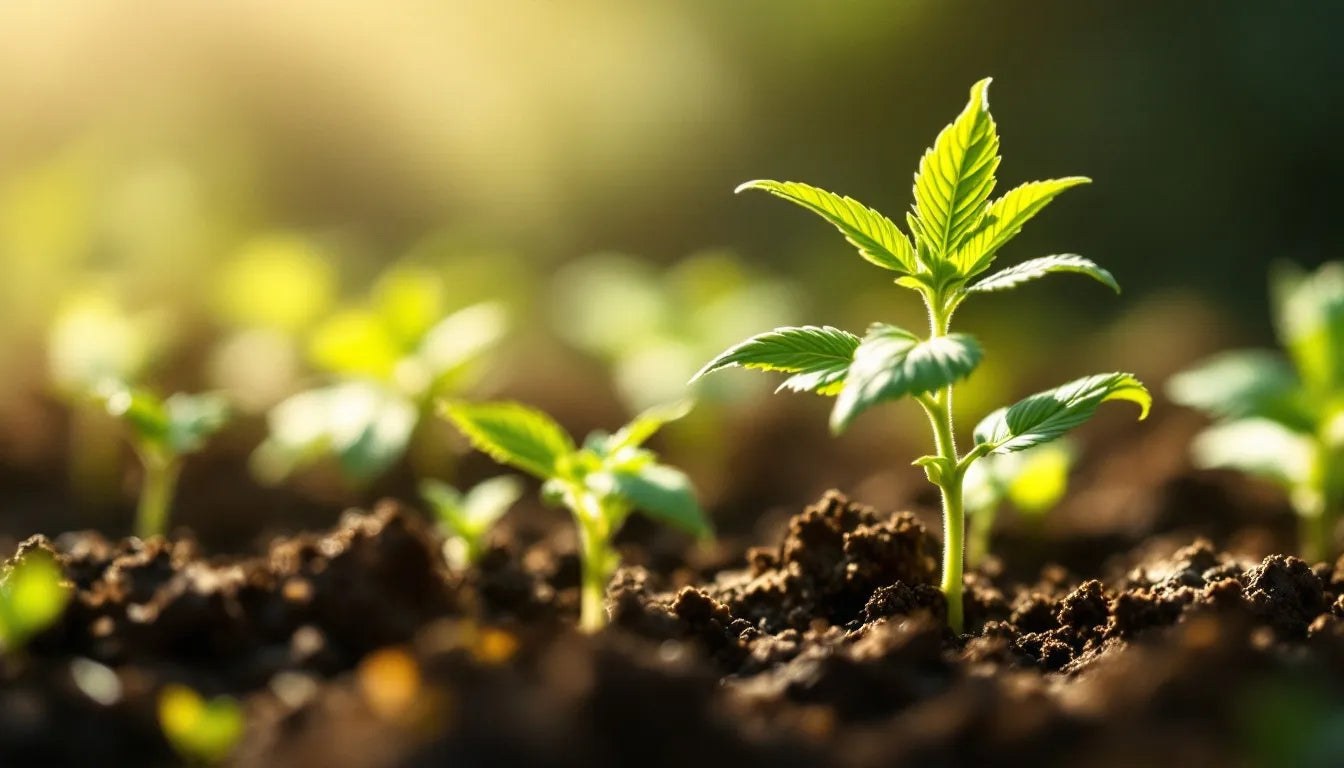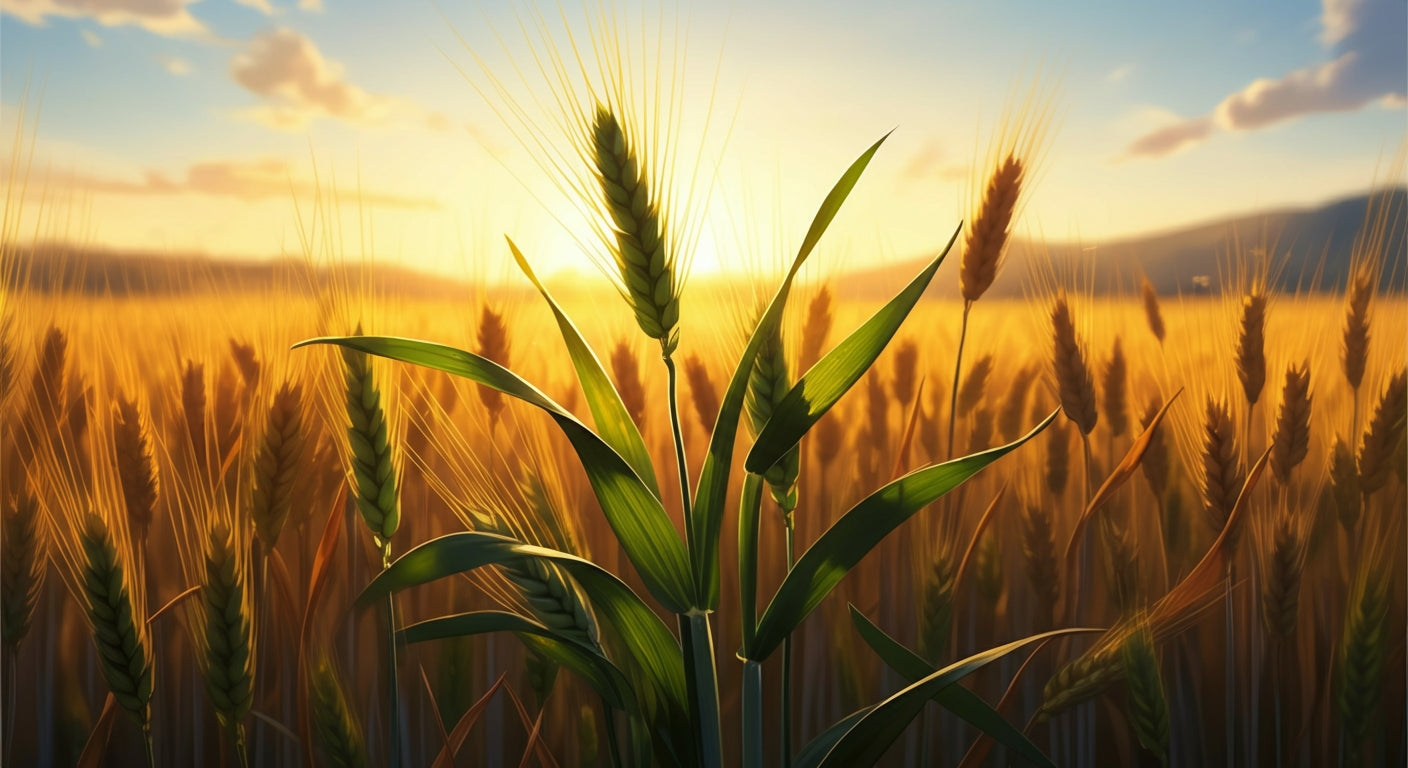
Comparing LED Grow Lights: A Comprehensive Guide to Making the Right Choice
Shopping for LED grow lights can feel overwhelming when hundreds of options claim to be "the best." Understanding how to compare LED systems objectively—beyond marketing hype—ensures you invest in lighting that actually delivers results. This comprehensive guide reveals exactly what to evaluate when comparing grow lights, helping you make informed decisions that maximize yields while protecting your budget.
The difference between a great LED system and a mediocre one isn't always obvious from product descriptions. By learning to compare key specifications, features, and real-world performance factors, you'll recognize quality systems that justify premium pricing versus budget lights destined to disappoint. Let's break down the essential comparison criteria that separate exceptional LEDs from expensive mistakes.
Understanding Key Specifications for LED Comparisons
Actual wattage versus advertised "equivalent" wattage represents the first crucial comparison point. Many budget manufacturers label lights as "1000W equivalent" when they draw only 100-150 actual watts from your wall. This misleading marketing creates false expectations about light intensity and coverage capability.
Always compare actual power draw rather than equivalent ratings. A quality 400-watt LED system provides dramatically different performance than a cheap "400W equivalent" light drawing 150 actual watts. Check product specifications for "true wattage," "actual power consumption," or "wall draw" to understand real electrical requirements and performance potential.

PPFD (Photosynthetic Photon Flux Density) measurements indicate actual light intensity reaching plant canopy. This metric matters far more than wattage claims because it measures usable light energy plants actually receive. Quality manufacturers provide detailed PPFD maps showing light distribution across their coverage area at various mounting heights.
Compare PPFD values at recommended mounting distances for your growth stage. Seedlings need 200-400 µmol/m²/s, vegetative growth requires 400-600 µmol/m²/s, and flowering plants demand 600-1000+ µmol/m²/s for maximum production. Systems failing to provide these PPFD levels at reasonable distances won't deliver professional results regardless of marketing claims.
Efficacy ratings (measured in µmol/J) reveal how efficiently LEDs convert electricity into usable plant light. Premium systems achieve 2.7-3.0+ µmol/J, meaning they produce more photons per watt of electricity consumed. Budget lights often deliver only 1.5-2.0 µmol/J, wasting electricity while generating excessive heat.
LED vs HID: The Fundamental Comparison
The LED versus HID debate represents the most fundamental comparison when selecting grow lights. Understanding the strengths and limitations of each technology helps determine which fits your specific growing situation and priorities.
LED grow lights consume 50-70% less electricity than HID systems while providing equal or superior growing results. A 400-watt LED typically matches or exceeds the output of a 600-1000 watt HID setup, translating to substantial monthly savings. Over a system's 5-10 year lifespan, these energy savings often exceed the initial purchase price difference. Learn more about LED vs HID comparisons and which technology suits your needs.
Heat management dramatically favors LED technology. HID bulbs generate intense heat requiring elaborate ventilation and cooling infrastructure. LEDs run cool enough to position closer to plants without heat stress, simplifying climate control while reducing cooling costs by 40-60% in most operations.
Spectrum control separates modern LEDs from HID limitations. Metal Halide (MH) bulbs provide blue-heavy spectrum suitable for vegetative growth but poor for flowering. High-Pressure Sodium (HPS) bulbs excel during flowering but create stretchy growth during vegetative phases. Quality LED systems provide full-spectrum output adjustable for each growth stage through a single fixture.

Lifespan comparisons heavily favor LEDs. HID bulbs degrade rapidly, losing 20-30% intensity within the first year and requiring replacement every 6-12 months at $100-200 per bulb. Quality LED systems last 50,000-75,000+ hours with minimal degradation, eliminating replacement costs and ensuring consistent performance for 5-10 years. For details on plant-specific comparisons, read our guide on best grow lights.
Initial investment represents HID's only advantage. Budget HID systems cost $100-200 initially, while quality LEDs start at $300-800. However, when calculating total cost of ownership including electricity, bulb replacements, and cooling expenses, LEDs become significantly more economical within 12-18 months.
Comparing Full-Spectrum vs Targeted Spectrum LEDs
Spectrum technology fundamentally impacts plant performance, making this comparison critical when evaluating LED options. Understanding the difference between white light "full spectrum" and targeted horticultural spectrum separates marketing from meaningful performance.
White light LEDs designed for home and office illumination produce broad spectrum output that appears natural to human eyes but wastes significant energy on wavelengths plants don't use efficiently. These chips were never engineered for photosynthesis, leading to mediocre growing results despite impressive visual brightness.
Targeted full-spectrum systems engineered specifically for horticulture focus energy on wavelengths plants actually absorb and utilize. The Gorilla GXi Series LED Grow Lights exemplifies this approach with spectrum optimized through thousands of hours of field testing by Northern California cultivators, maximizing harvest weight and quality rather than human visual appeal.
Multi-channel spectrum control enables precise adjustment throughout growth cycles. Single-spectrum lights force compromise—too blue for flowering or too red for vegetative growth. Tri-channel systems like the Xi420 LED Grow Light allow independent control of blue, red, and UV/IR wavelengths, optimizing light delivery at every stage while eliminating wasted energy.
UV and IR capabilities separate advanced systems from basic models. UV wavelengths trigger beneficial stress responses that increase resin production and secondary metabolites, enhancing potency and terpene profiles. IR wavelengths penetrate deeper into canopy and boost flower density. Systems lacking these specialized wavelengths simply cannot achieve the same quality results as advanced models offering UV/IR control. Explore more about full-spectrum technology and its impact on yields.
Comparing LED Models by Coverage Area
Matching LED power and coverage to your growing space prevents both underpowering (weak, stretchy plants) and overpowering (wasted money and electricity). Comparing systems by their actual effective coverage area ensures optimal investment for your specific needs.
Small space growers (2x2 to 2.5x2.5 feet) need compact systems delivering concentrated power without heat buildup. The Xi220 LED Grow Light crushes these dimensions with targeted full-spectrum performance perfect for 1-2 plants, providing professional results without overwhelming small tents or closets.
Medium operations (2x3 to 3x3 feet) represent the sweet spot for most home growers, accommodating 2-4 plants comfortably. The Xi330 LED Grow Light delivers ideal coverage for these dimensions, offering excellent value with all advanced features including tri-channel control and wireless GXi connectivity.
Standard growing spaces (2x4 to 3x4 feet) suit serious home production operations. The Xi420 LED Grow Light maximizes production in these environments, providing professional-grade intensity and spectrum control for 4-6 plants with consistent PPFD distribution across the entire canopy.
Large operations (4x4 to 5x5 feet) demand high-power systems maintaining intensity across expanded coverage. The Xi750 LED Grow Light commands these areas with uncompromising intensity, delivering commercial-grade performance with intelligent heat management that keeps grow spaces comfortable. For more guidance on selecting the right size, check our LED grow light distance chart.
Comparing coverage claims requires skepticism. Manufacturers often list maximum coverage under ideal conditions with high-light-demand plants receiving barely adequate PPFD. Effective coverage—the area receiving optimal PPFD for vigorous growth—typically measures 20-30% smaller than advertised maximum coverage.
Smart Features and Control Systems
Modern LED technology extends far beyond simple on/off switches. Comparing control systems and automation features reveals which lights simplify growing versus which require constant manual intervention.
Wireless connectivity transforms growing from manual labor into precision agriculture. The GXi wireless ecosystem connects directly to smartphone apps, enabling remote monitoring and adjustment of spectrum, intensity, and schedules from anywhere. This convenience matters especially for growers managing multiple spaces or unable to access setups daily.
Pre-programmed growth stage presets eliminate guesswork for beginners while offering advanced customization for experts. Simply select seedling, vegetative, or flowering mode, and the system automatically optimizes spectrum and intensity. As plants mature, switch presets with a single tap rather than manually adjusting multiple channels and intensity levels.
Sunrise/sunset technology gently ramps light intensity up and down, mimicking natural dawn and dusk transitions. This automated feature prevents light shock that stresses plants during abrupt on/off switching, promoting healthier development and improved yields. Cheap systems lacking this feature subject plants to harsh transitions twice daily.

Automated environmental protection monitors temperature and adjusts light intensity to prevent overheating. If temperatures exceed safe thresholds, smart systems automatically dim output to protect both plants and equipment. This safeguard prevents costly crop losses and equipment damage that manual-only systems can't address when you're away.
Dimming capability extends system versatility across growth stages and plant types. Start seedlings at 25-50% intensity, increase to 75% during vegetative growth, and push to 100% for flowering. Fixed-intensity systems force compromise—either underpowering mature plants or overwhelming seedlings. For practical setup guidance, see our complete grow tent setup guide.
Build Quality and Component Comparison
Construction quality determines whether your LED investment delivers years of reliable service or fails after one harvest. Comparing components and build standards separates lasting value from false economy.
Driver reliability accounts for 90% of LED system failures. Mean Well drivers represent the gold standard, costing more initially but delivering years of trouble-free operation. The X² Commercial LED Grow Light features Mean Well drivers paired with OSRAM LED chips for unmatched reliability in commercial applications. Cheap drivers fail unpredictably, destroying crops during critical growth phases.
LED chip quality from manufacturers like Samsung, OSRAM, or LumiLEDs ensures consistent output and longevity. Budget systems use inferior chips that fade quickly, forcing intensity increases to compensate for diminished output—wasting electricity and shortening already brief lifespans.
Heat sink design impacts both performance and lifespan. Commercial-grade aluminum heat sinks efficiently dissipate warmth away from sensitive components, maintaining optimal operating temperatures. Budget fixtures use minimal or poorly designed heat management, causing premature failures and reduced light output from overheated chips.
Frame construction matters for long-term durability. Powder-coated steel or commercial-grade aluminum frames withstand years of handling and environmental exposure. Cheap plastic housings crack, warp, and fail under heat stress, while flimsy metal bends during routine adjustments.
Waterproof ratings (IP65 or higher) protect electronics in humid grow environments. Quality systems resist moisture damage and tolerate occasional cleaning, while unrated budget lights fail from humidity exposure common in growing spaces.
Comparing Value: Total Cost of Ownership
Price comparison requires looking beyond initial purchase price to total cost of ownership including electricity, replacements, and performance factors affecting final harvest value.
Budget LEDs ($100-300) seem attractive initially but typically cost more long-term through higher electricity consumption, premature failures requiring replacement, and poor spectrum quality producing smaller yields. Entry-level quality systems like the Xi220 start around $300-400 while delivering professional performance.
Mid-range systems ($400-700) offer the best value for serious home growers, providing professional features, quality components, and efficiency that pays for itself through electricity savings and increased yields. The Xi330 and Xi420 represent this category's sweet spot.
Premium systems ($800+) target commercial operations and serious home growers demanding maximum performance. The Xi750 justifies premium pricing through superior yields, advanced automation, and commercial-grade reliability that eliminates costly failures.
Calculate payback period by comparing your current lighting costs (electricity + bulb replacements) versus LED costs including purchase price and reduced electricity. Most quality LEDs pay for themselves within 12-24 months through savings alone, then deliver pure profit through improved yields and eliminated replacement costs. For more on growing value, see our best grow lights comparison.
Yield increases justify premium LED investments. Many growers report 20-40% higher yields after switching from HID to quality LEDs. If a $600 LED system increases your harvest from 12 ounces to 17 ounces per cycle, that 5-ounce improvement easily justifies the investment within one harvest.
Comparing LED Grow Light Warranties and Support
Warranty coverage reveals manufacturer confidence in product quality and longevity. Comparing warranty terms helps identify systems engineered for lasting performance versus disposable products.
Coverage duration matters significantly. Budget manufacturers offer 6-12 month warranties, essentially admitting products won't last longer. Quality systems provide 3-5 year coverage or 50,000+ hour guarantees, demonstrating engineering confidence and protecting your investment.
What's covered under warranty separates comprehensive protection from meaningless guarantees. Full component coverage including drivers, chips, and housing provides real protection. Limited warranties excluding drivers (the component most likely to fail) offer little practical value.
Lifetime growing support offered by Northern California-based manufacturers like Gorilla provides ongoing value beyond warranty periods. Access to expert cultivation advice, troubleshooting assistance, and optimization guidance helps maximize yields throughout your growing career.
Customer service responsiveness matters when problems arise. Companies offering phone support, rapid email responses, and knowledgeable technical assistance provide genuine value. Budget brands with only email support and slow response times leave you stranded during critical growing phases.
Practical Comparison Checklist
Use this checklist when comparing LED grow lights to ensure you evaluate all critical factors:
✓ Actual wattage vs advertised equivalent wattage ✓ PPFD values at recommended mounting heights for your growth stages ✓ Efficacy rating (target 2.5+ µmol/J for quality systems) ✓ Spectrum type (targeted horticultural vs generic white light) ✓ Multi-channel control for adjusting spectrum throughout growth ✓ UV/IR capabilities for enhanced quality and yields ✓ Coverage area matching your growing space dimensions ✓ Smart controls including app connectivity and automation ✓ Component quality (Mean Well drivers, Samsung/OSRAM chips) ✓ Build quality (aluminum construction, IP65+ rating) ✓ Warranty coverage (3-5 years comprehensive protection) ✓ Total cost including electricity over 3-5 years ✓ Customer reviews from verified growers, not just ratings
Frequently Asked Questions
What's the most important specification when comparing LED grow lights?
PPFD (Photosynthetic Photon Flux Density) at your mounting height is the most critical specification, as it indicates actual usable light reaching your plants. A light may claim high wattage but deliver inadequate PPFD for vigorous growth. Always compare PPFD maps showing light intensity distribution across the coverage area at various heights.
How do I compare LED grow light spectrum quality?
Compare targeted horticultural spectrum engineered for photosynthesis versus generic white light designed for human vision. Quality systems feature independently adjustable blue, red, and UV/IR channels rather than fixed spectrum. Check if the manufacturer provides spectrum charts and PAR (Photosynthetically Active Radiation) data rather than just color temperature ratings. Learn more about spectrum differences and why it matters.
Are more expensive LED grow lights worth the extra cost?
Premium LEDs typically justify their cost through superior efficiency (lower electricity bills), longer lifespan (no replacement costs), better spectrum (higher yields), and quality components (reliable operation). A $600 quality LED often costs less over 3-5 years than a $200 budget light when factoring electricity savings, replacement costs, and yield differences. Calculate total cost of ownership rather than just purchase price.
Can I compare LED grow lights by wattage alone?
No, wattage alone doesn't indicate performance. Compare actual power draw combined with efficacy ratings and PPFD output. A highly efficient 300-watt LED can outperform a poorly designed 500-watt system while using less electricity. Focus on light output (PPFD) and efficiency (µmol/J) rather than raw wattage.
What's the difference between cheap and expensive LED grow lights?
Quality differences include: component reliability (Mean Well vs generic drivers), chip quality (Samsung/OSRAM vs unknown), spectrum optimization (targeted vs white light), efficacy ratings (2.7+ vs 1.5 µmol/J), build quality (aluminum vs plastic), warranty coverage (3-5 years vs 6-12 months), and customer support. Premium systems deliver consistent results for years while budget lights often fail within 1-2 harvests.
Summary: Smart LED Grow Light Comparisons
Compare LED grow lights using PPFD output, actual wattage, efficacy ratings (2.7+ µmol/J), and targeted horticultural spectrum rather than marketing claims. Evaluate component quality (Mean Well drivers, premium chips), coverage area matching your space, multi-channel spectrum control, and total cost of ownership over 3-5 years. Quality systems justify premium pricing through superior efficiency, reliability, and yields that outperform budget alternatives within 1-2 harvests.
Choose Your Perfect LED System with Confidence
Ready to invest in LED technology that delivers consistent professional results? The Gorilla GXi LED Grow Light Collection offers precisely engineered systems for every growing situation, from compact Xi220 units for personal grows to powerful Xi750 systems for commercial operations.
Each system features targeted full-spectrum technology developed through thousands of hours of field testing by Northern California's elite cultivators, tri-channel spectrum control with wireless GXi automation, premium Mean Well drivers and OSRAM chips for unmatched reliability, and comprehensive warranty coverage backed by lifetime growing support. Stop wasting money on budget lights that disappoint—compare our professional-grade systems and discover why serious growers choose Gorilla for consistent exceptional results.
Browse our complete collection today and experience the difference that precision engineering, quality components, and Northern California growing expertise make in your yields and growing success. For complete growing system guidance, explore our best LED grow lights for indoor plants and LED grow light 2025 guide for the latest technology and recommendations.

Lena Myles
I'm a mushroom enthusiast and home cook based in Oregon. I'm passionate about foraging and creating fungi-focused recipes, especially delicious, plant-based dishes using gourmet mushrooms like trumpet, shiitake, and oyster. When I’m not in the kitchen, you’ll usually find me wandering the woods in search of new wild flavors.


